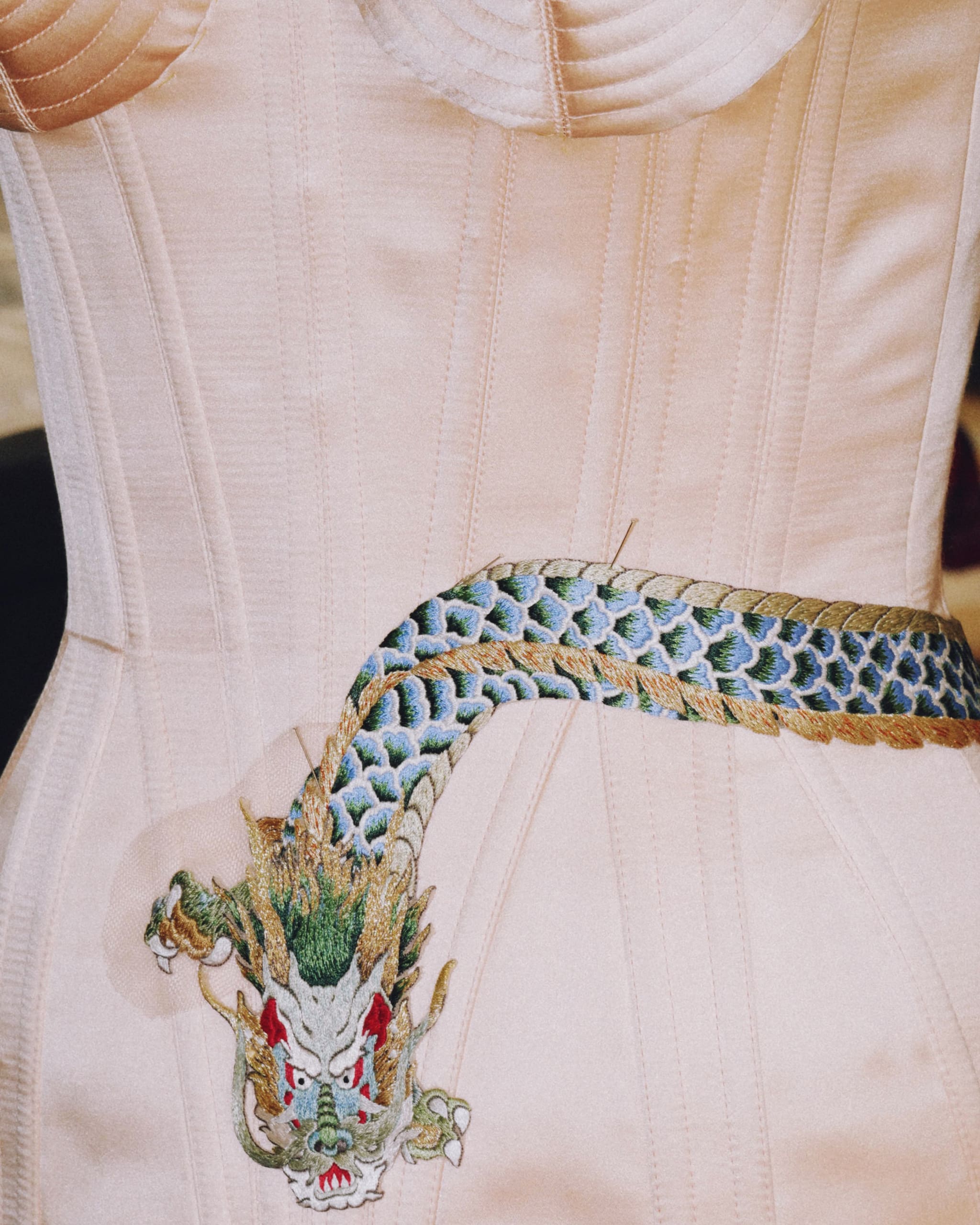A close-up of a work in progressPhoto: Courtesy of Jean Paul Gaultier
On Wednesday afternoon, all eyes will be on the Rue Saint Martin headquarters of Jean Paul Gaultier, where Julien Dossena will present his couture debut. In the run-up to the show, the designers sat down with Vogue for a wide-ranging discussion about freedom of expression and fashion past, present, and future. This conversation has been edited and condensed.
How’s it all going, Julien? Are you ready?
Julien Dossena: Just about everything’s in hand, the petites mains are very proactive, so once you launch an idea the toiles come together fast. I could keep going here for years, there are so many ways you could keep reinterpreting things—it’s been really fun. The exploration process is a real pleasure, but at some point you have to stop exploring and execute.
What can you tell us without giving away too much?
JD (to JPG): The first time we had lunch, we spoke about some of the shows that really left an impression on not just me but everyone. What was amazing was having a chance to work with the archives, because there’s a difference between having an idea about a collection and actually being able to touch the clothes and see their real-life allure.



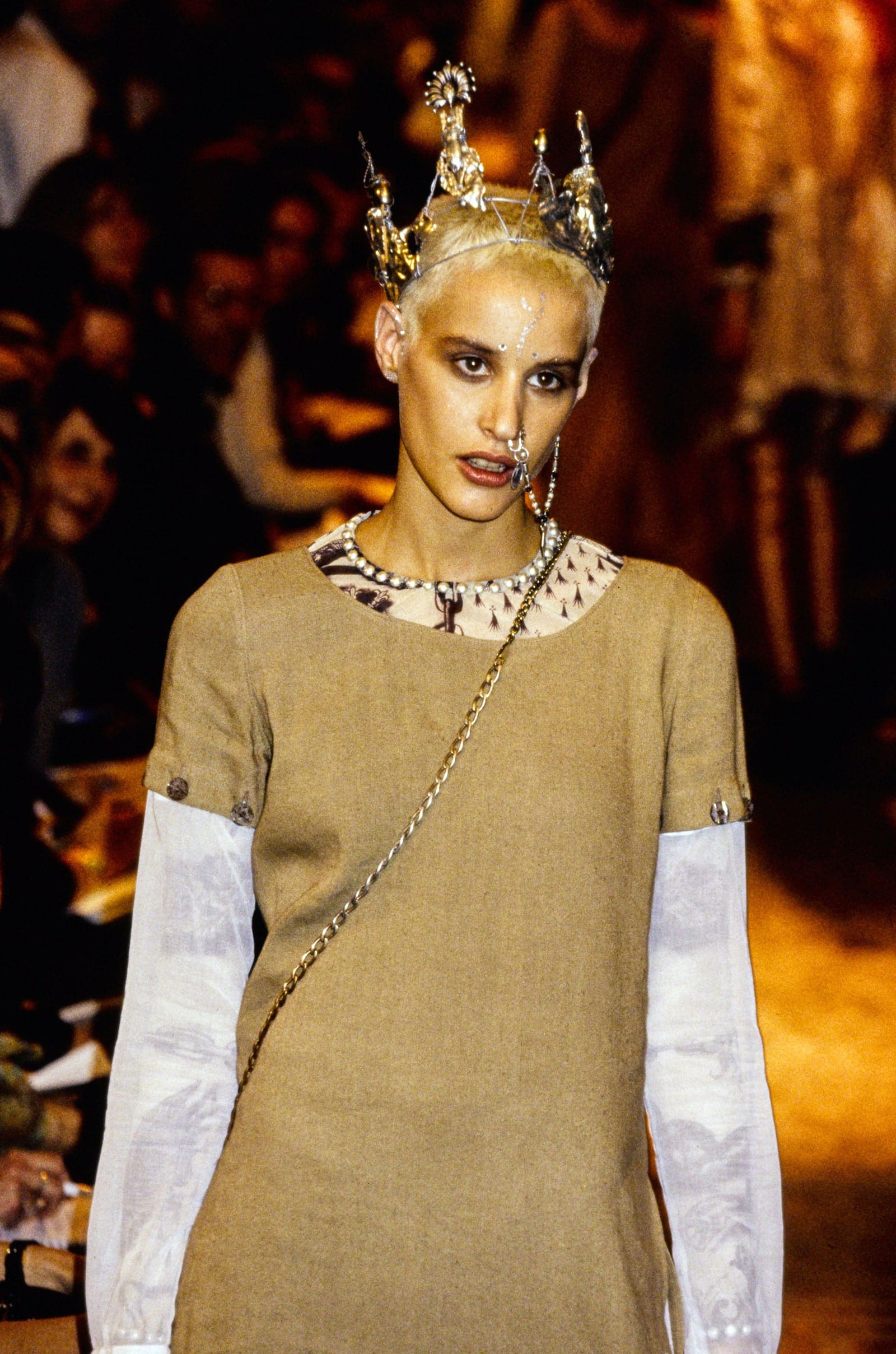
When you’re faced with 40 years of archives, where do you even begin?
JD: Three points of departure were the “rabbi” collection, La Concierge est Dans l’Escalier, and Barbès; I was also thinking about the construction of some sublime wrap-around dresses, like one with an embroidered front, or a printed one that winds around the body. I was really looking at principles of cut and expression—and what’s great about those pieces is that even years later there’s the same cool-erie, if that’s the word. They live as well now as they did then, and the person who wears it is going to be the coolest one on the street. It’s great to have that modern resonance. And of course I discovered some pieces that I never knew about. Also, there are no real themes, it’s more about characters. Wherever we looked we found a certain power of self-expression—almost cinematic compositions of femininity or masculinity, or both—in the silhouettes. To me, that’s really beautiful and interesting. It was a joy to think about pieces as entities unto themselves. We gave them all names and worked that way.
Jean Paul Gaultier: I’m really pleased to hear it, because the point about the characters is really true. I realized I wanted to become a fashion designer when I saw this movie, Falabalas (Paris Frills, 1945), starring Micheline Presle. I always considered my models as heroines with a real personality, as characters. So it’s amusing to me that you saw the clothes that way.
JD: It works well in the noblest sense of research and movement. There’s always this idea of energy and vitality, because you’re dealing with what feels like living characters and not just “pieces.” There’s this virtuosity in your work that brings things to life. In any case, to me it’s a little abstract in terms of creative process, yet it’s resonant because there’s a rare combination of the technical work and giving self-expression to a community of characters that didn’t really exist in fashion before you put them on the runway. It’s very beautiful, and I see it as an optimistic expression of new possibilities.
JPG: That’s very flattering—what can I say to that? There’s enough here to go into analysis! Maybe we should call in a shrink (laughs). C’est excellent.
So Jean Paul, you weren’t there for the tour of the archives?
JPG: No, not at all. The whole concept [of this couture collaboration] is about trusting a guest designer whose talent I respect. So I give them complete freedom. There are no instructions or anything because I figure if it were up to me to work for another house, maybe I’d kind of want direction but it’s better not to have it because you wind up being influenced, whereas your own vision is the whole point. There’s no reason to influence [a guest designer], because that puts them in a position of trying to please you. I want to know his interpretation, his vision. Things have to evolve, it can’t just stay Jean Paul Gaultier. But maybe I’ll come consult with you for the show (laughs).
JD: What’s great is your generosity and above all the awareness you have of the creative freedom required. I take letting another designer interpret your work as a sign of great confidence.
JPG: I always enjoyed freedom; working for a big house or a big name is something else entirely.
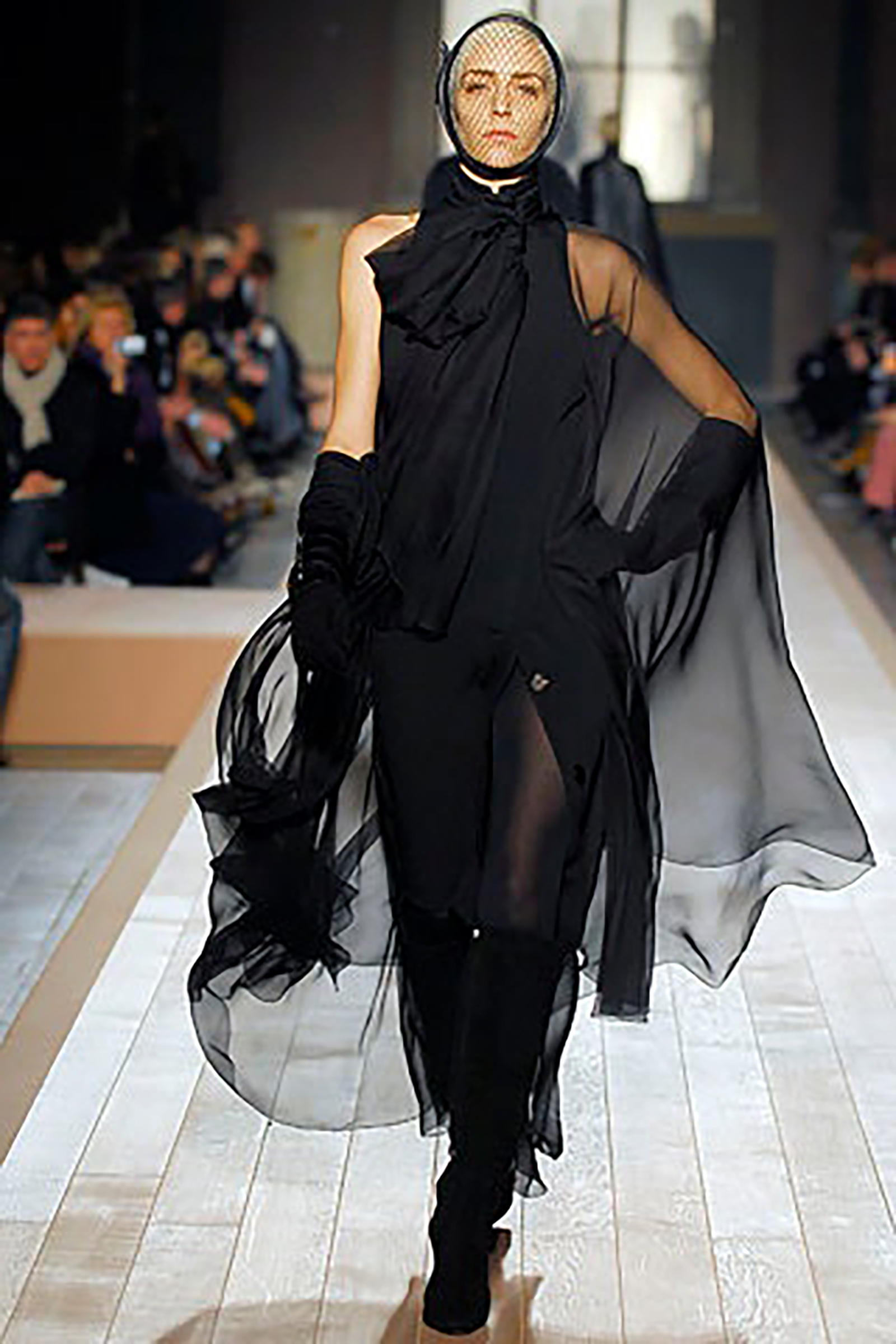

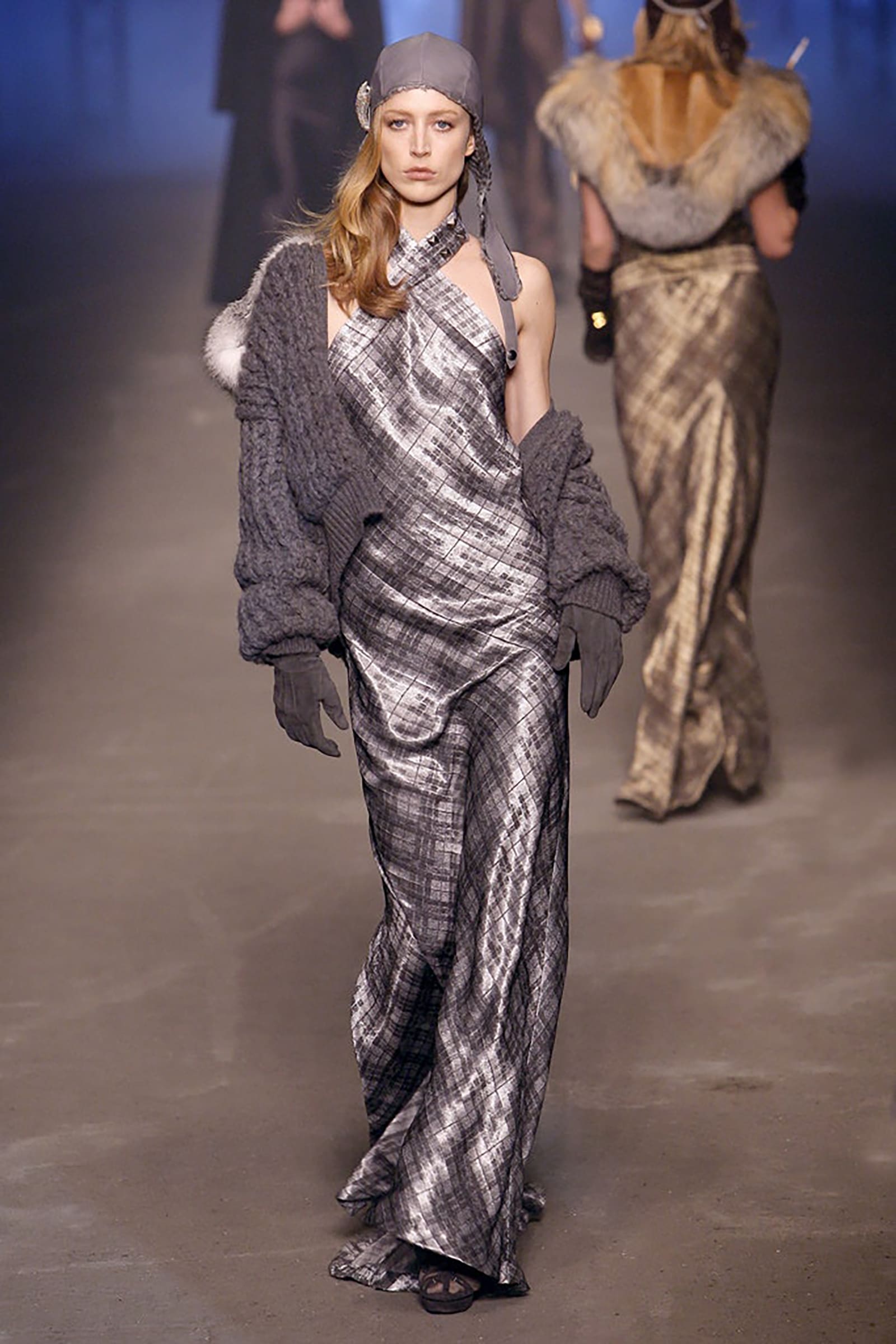
JD: But you were also free at Hermès, right?
JPG: That’s an exercise I enjoyed too, but I was already a known designer by then. When I started out at Cardin, I was “doing Cardin” by proposing ideas that might work for the house’s style, which was very specific. For Hermès, I tried to bring something of myself to the house’s style as I saw it. The designer who did amazing work for Hermès, which was perhaps truer [to the house] than mine, was Martin Margiela. He did something very timeless and completely Hermès; his signature was there while remaining invisible. He did absolute Hermès with total understanding and respect. But for me [for this project] it’s best not to give any directions, because the last thing you want is a lot of people putting in their two cents’ worth—it leads to too much compromise.
Julien, what balance did you strike between Jean Paul’s body of work and your own vision?
JD: It’s a new exercise for me, because there’s the principle of being a guest and working with a living heritage, which is really a unique set-up. That approach is very different from working for a house where the codes are XYZ. The other aspect was bringing a touch of Paco Rabanne, how that dialogue might happen between the two designers. And then there is my work, which can be very instinctive whether it’s about an embroidery or a certain kind of femininity, a certain fluidity, and where we want to take that. And then there’s the presentation. Do we want to be dramatic? We’re both French, do I want to emphasize that?
There’s also a lot of humor…
JD: That too, and lots of generosity, which is important to me. So I wanted to interpret that with a sense of volume that’s maybe more extreme in some places, and with a certain lightness. There’s so much richness here: there’s the spirit of the puces (flea market), the idea of clothes that have lived before. I find it very French to try and create a mix of registers. To me, it’s important to be clear and noble, and I hope to pay tribute to Jean Paul’s virtuosity while keeping a twist that makes you think about the character, where it comes from and where it’s going.
This is your first couture outing. How has it been for you?
JD: I have to say that working with the atelier, getting to know everyone, is super. [To Jean Paul:] Your team has a lot of freedom in the way they approach things, because that’s how you trained them. So there’s a real conversation about how they see this lightness, or that ease, or a certain kind of sophistication.
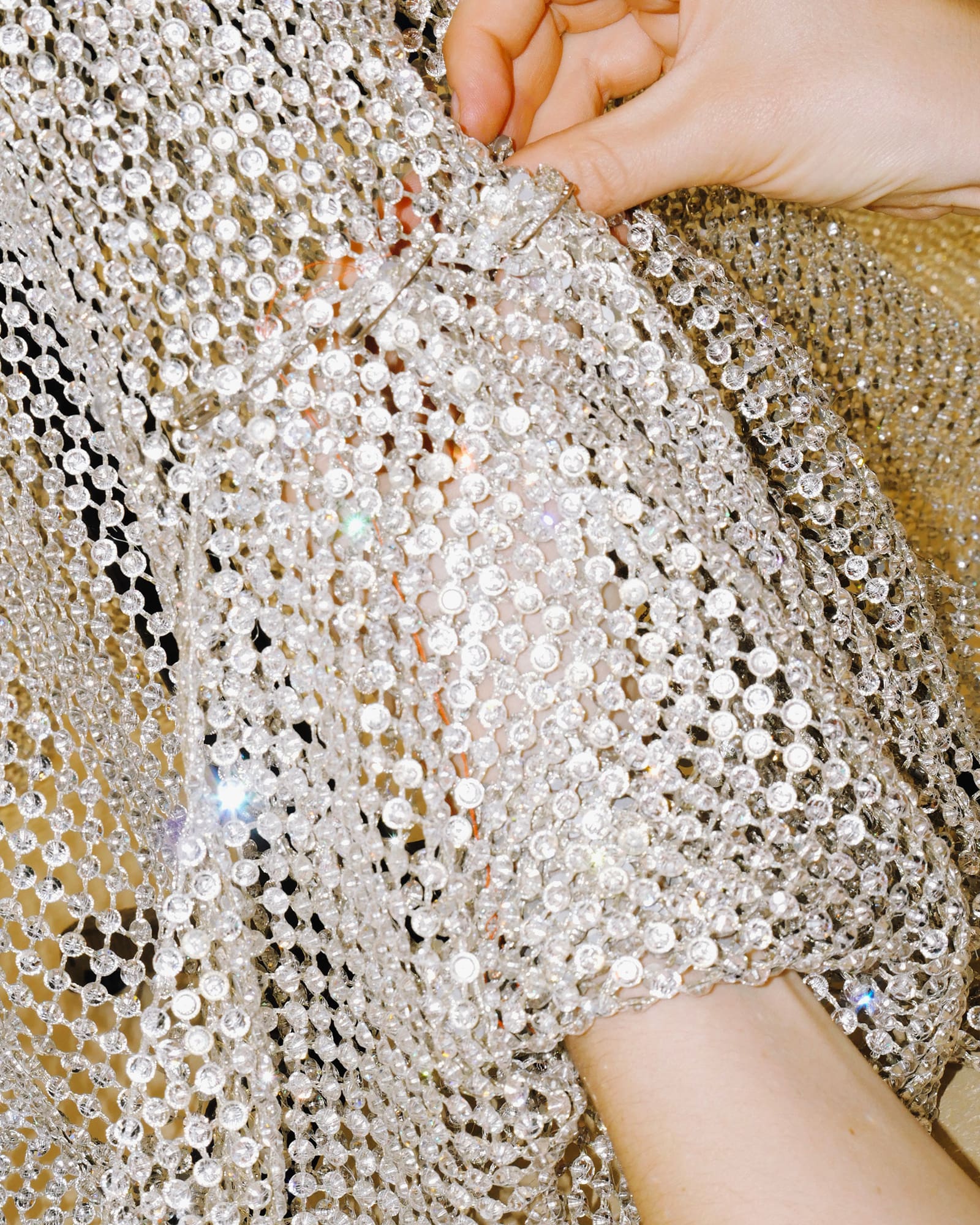
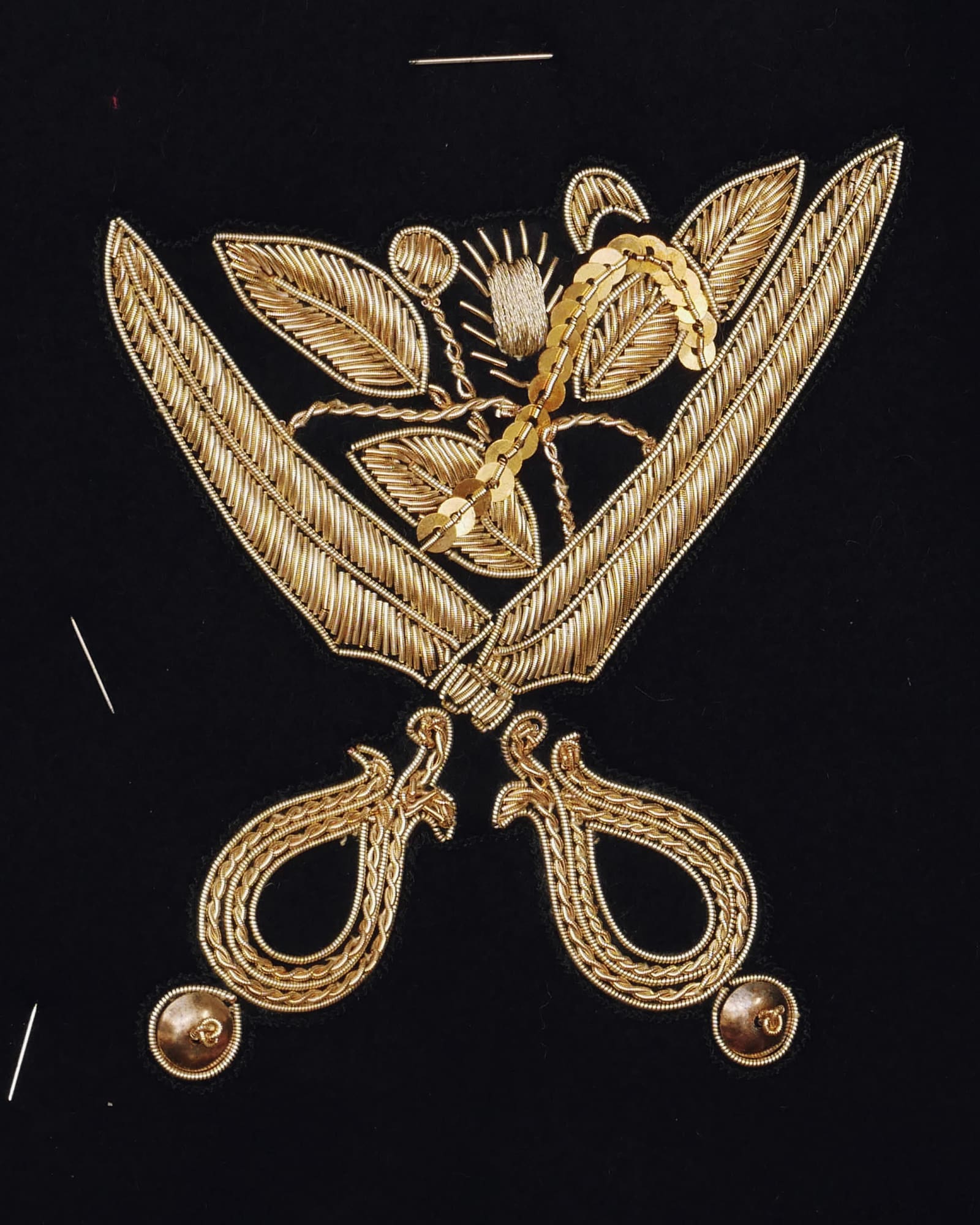
Jean Paul, what have you seen of this collection so far?
JPG: Absolutely nothing. Even though we’re working on something for Madonna, I go up there and announce I don’t want to see anything [yet]! But what I can say is that I had seen Julien’s work for Paco Rabanne on Mademoiselle Agnès’s TV show awhile back, and I remember seeing things that were very Paco Rabanne, but also things that were very different and interesting. I remember one knitted coat with shearling. It was really beautiful and I said to myself, voilà. And I find what you’ve done lately for Paco Rabanne is really very good—like that dress in chainmail with leather draping. The mix takes Paco somewhere new while remaining very on-message. Creatively, it’s exciting to see the mixing and modernizing of that universe. You’re not afraid of taking risks to make things that are strong and beautiful.
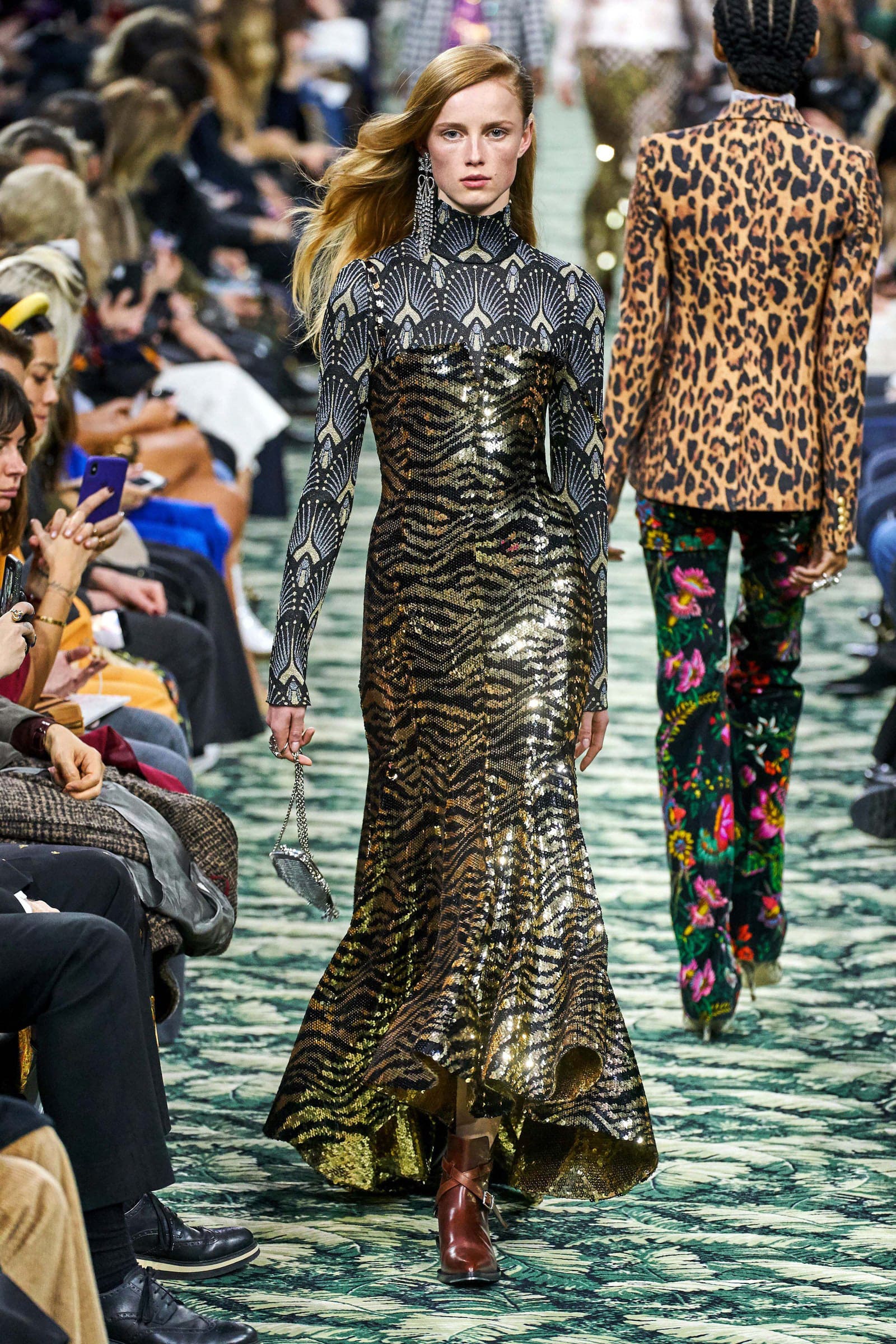

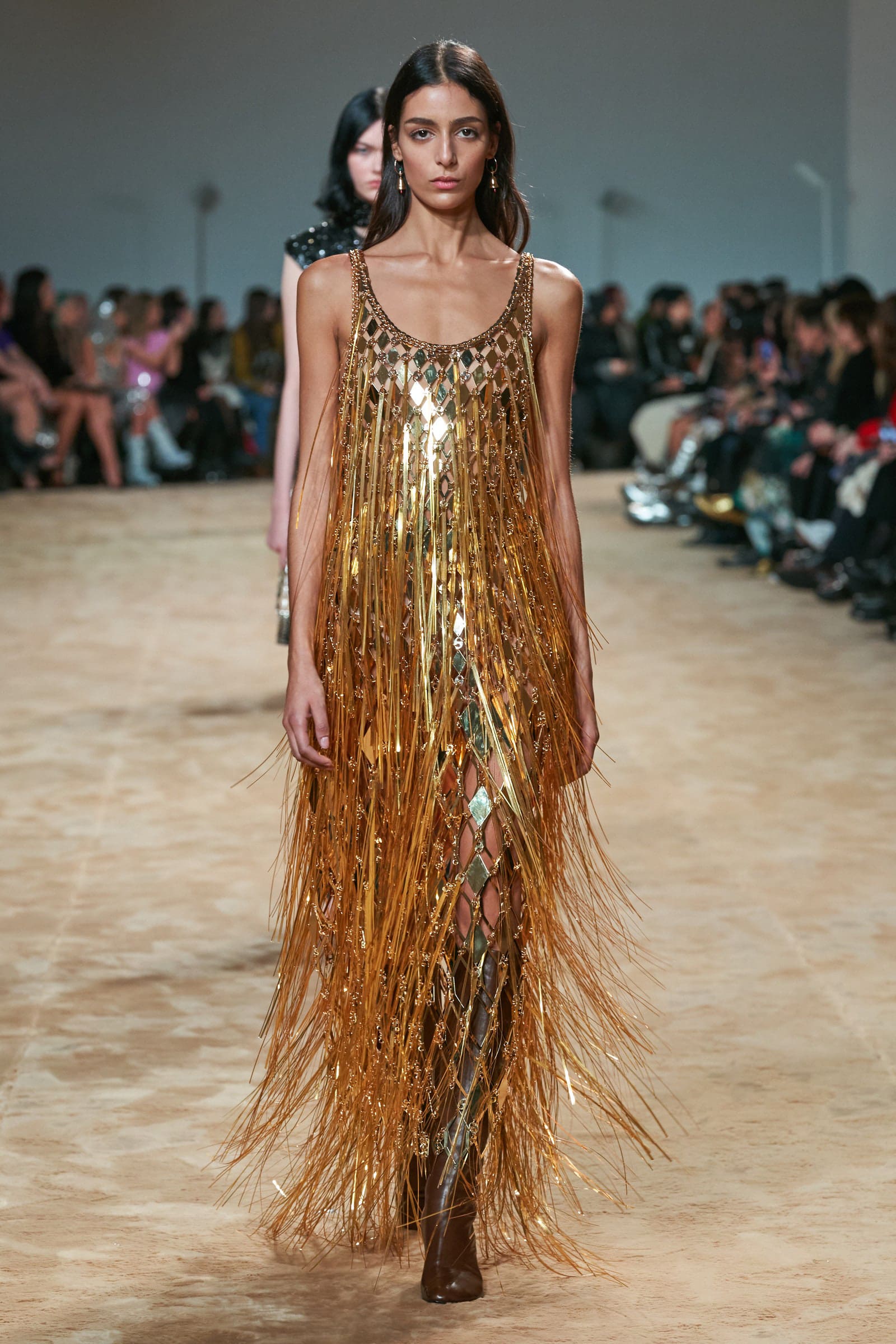
This is the house’s fifth couture collaboration, and the first from the Puig stable. How was that decision made?
JPG: It was really easy. It was a logical choice, given the caliber of Julien’s work for Paco Rabanne and given his own design signature. I have complete freedom to choose whomever I wish, so it wasn’t in any way imposed by the group. Even if I’ve stepped back, I still love fashion so it’s a personal pleasure for me [to invite a guest designer] and it flatters my ego that a talented designer would agree to take what I’ve done and make it his own. I never wanted to be copied, and it’s important to have [a designer] who’s not “inspired” by 36 other people. It has to be someone who brings something to the conversation. He can do neo-Paco Rabanne, so he can perfectly well do neo-Gaultier.
What collections inspired you most, Julien?
JD: I love the ideas of morphing that Jean Paul worked with over the years: a piece that starts out as one thing and then transforms into something else. There’s also the notion of making everyday things fantastical, which I find very poetic. We’ve done embroideries that pick up on trompe l’oeil but also include the idea of movement—it’s a reinterpretation of JPG codes, but using other techniques. There’s a concept of jumpsuits with integrated shoes and lace that’s like a second skin; there’s transparent and vintage lingerie borrowed from the 19th century, and the idea of ’50s-era déshabillés. The collection with Christine Bergstrom in a sequined second-skin Botticelli [informs] gown in transparent tulle embroidered with guipure, which goes back to [Jean Paul’s] work with nudity and the body.
Some embroideries have been reworked, revisited, and used in different ways. I like the idea of giving an ‘old soul’ new life, so I sourced vintage lace from a woman named Sarah at the puces, because I find it beautiful to be able to offer the client different kinds of 20th century lace that might go with her complexion. There’s also the idea of giving old jeans a new life in a way that’s very couture. And we found a beautiful grain de poudre and tennis stripes among the house’s deadstock.

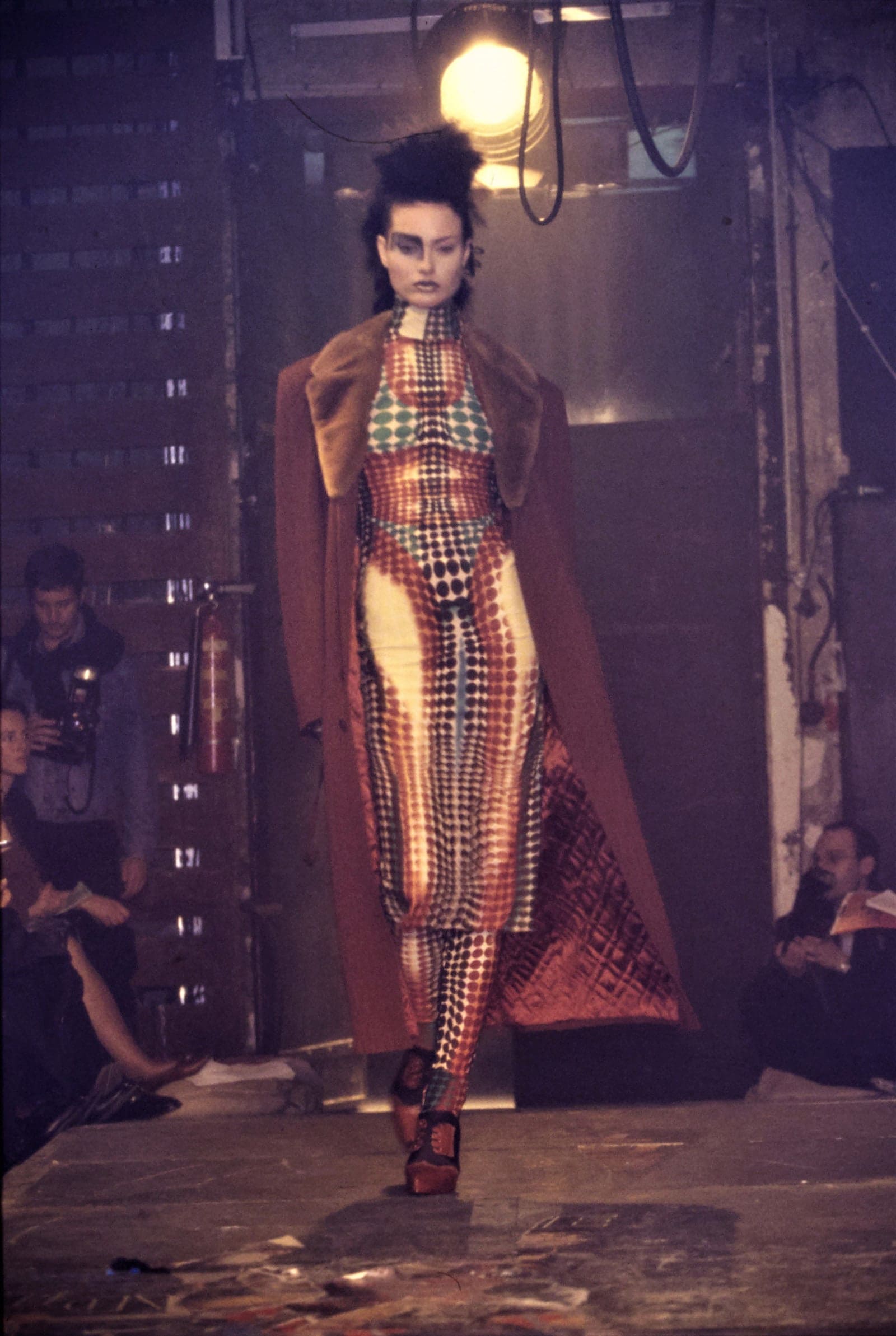
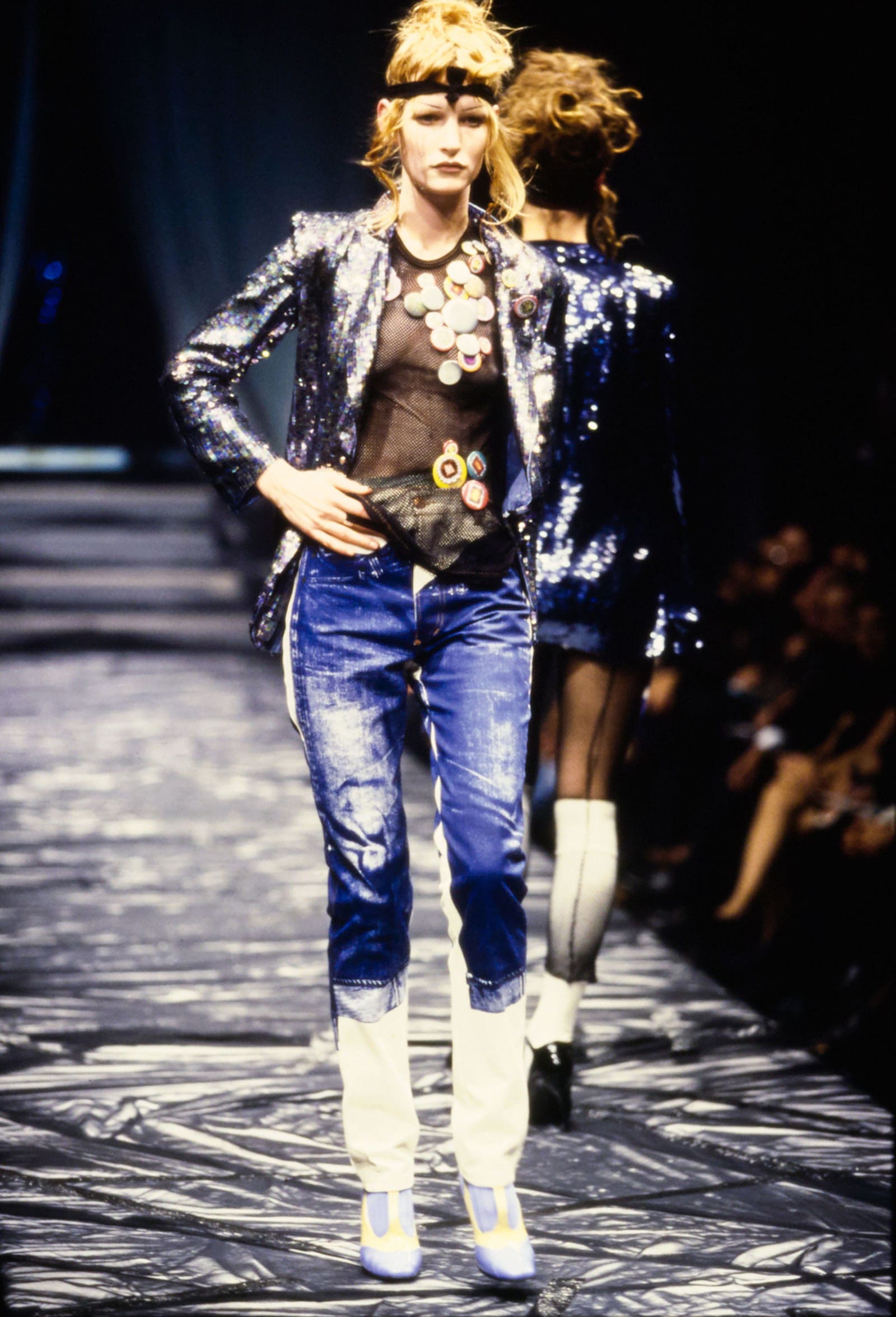

In terms of specific collections—you mentioned the rabbi collection.
JPG: That collection came to me when I visited the Jewish quarter in London, and I was struck by this community and the power of the way they dress.
JD: For me, there’s this idea of kinds of clothes, allures, and attitudes that are potentially part of a dress code, but what happens is that they are transformed. The question is how to take an element and, with all the good intentions in the world, draw attention to it and say “look how beautiful this is.”
JPG: That said, I’m not sure you could do something like that today.
JD: I’ve always considered that when you transform something and keep just a line, or an element, it’s a rather virtuous exercise. If you take a Hawaiian raffia skirt and put it with a lei, that brings nothing new to fashion. But if a designer’s work is really well done, a mix of genres and codes creates a new entity, and a new identity. If you approach that with respect, it’s super interesting. I think it’s important to continue exploring codes and reapplying them in a way that creates something new. You have to have confidence in your own respect and the work you put into it, and that’s how I see the rabbi collection, for example.
Is there an element of nostalgia at work here?
JD: Not for me, because the clothes [in the archive] are so alive. For me personally, nostalgia is about an emotion that’s aroused by seeing something again. For me, it’s more about discovering, for example, a dress in this kind of draped, crushed silk velvet that used to be used for hats, but it’s not being produced anymore, which is when you say “wow—there she is.” Those moments are somewhat sacred, but it’s not about nostalgia.
Did you work with muses in mind?
JD: It was more about expressing a community. [To JPG] To me, it’s the people around you who really inspire you, so I keep that in mind without really thinking about anyone in particular.
JPG: That’s exactly it. The people who inspired me caught my attention for the way they were through their clothes. It’s sociology, in the end.
JD: Fantasist sociology.
JPG: There’s always the notion of pleasure and amusement. You can talk about clothes—that’s how we express ourselves as designers—and really say something.
JD: The idea of pleasure is important, because in your work no one had expressed ideas of provocation and irony in that way before. There’s something innocent and generous about that.
JPG: It comes from reality: it’s always about people you see or meet, or someone who inspires you with an attitude.
JD: It can be the way a girl dances at a party, for example. Someone with charisma and attitude can lead you to creating completely new characters. That’s what’s so interesting about what we do, aside from the finality of designing a piece.
JPG: It can be as simple as the way a girl puts her hands in her pockets.
Julien, were you consciously taking currents like fluidity, body positivity or “naked dressing” into account?
JD: I like it most when inspiration happens as naturally as possible, and I love the idea of freedom in general. I’m an optimist by nature, so when I see a whole generation that doesn’t sit around wondering whether they want to look “more like a boy” or “more like a girl”—we’re not even talking about androgyny anymore, we’ve moved beyond that. This new generation has exploded the old way of thinking beyond what I would have thought possible. Now, freedom of expression is very pure—you can be whatever you want, and I find that really beautiful. Freedom without limits inspires me. It gives me a lot of hope for the future.
That freedom and diversity of expression must be gratifying for you Jean Paul, since you pioneered that on the runway.
JPG: I really think it’s always about someone else, about seeing someone who’s inspiring and completely of a moment. I think that’s how we’re made: we see something, and then we re-offer what we’ve seen. It’s a little like giving directions.
JD: Yes, like interpreters or translators. It’s like a culture. Like we said about characters and clothing that speaks—there’s all the atelier’s work, the sophistication of it, the way you approach a silhouette. We are here to look at the clothes; [the runway] shouldn’t become an amusement park, because then you can’t see as far. This is about the clothes, a love of clothes that are meant to be really seen and worn and the clients who will wear them, and who buy them the same way they would a piece of art. Yes, it’s couture, but it’s also a reality.

This article was originally published on Vogue.com
